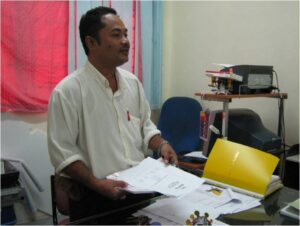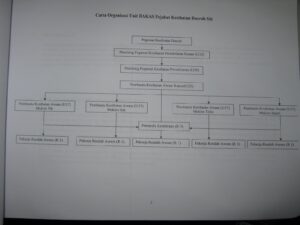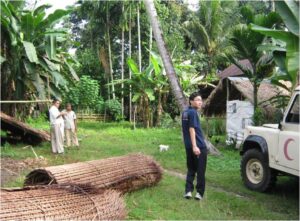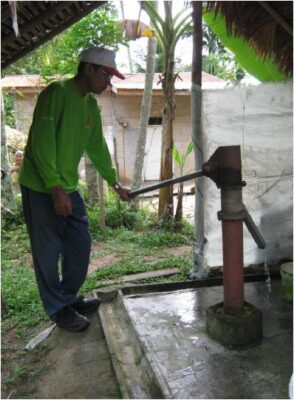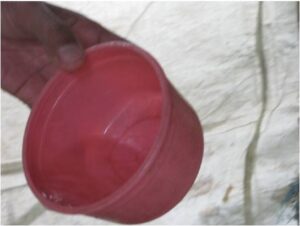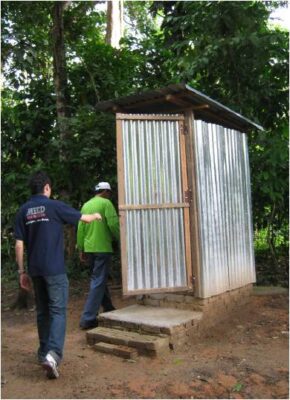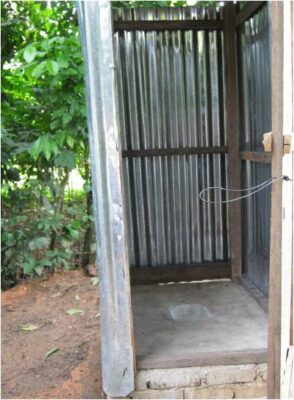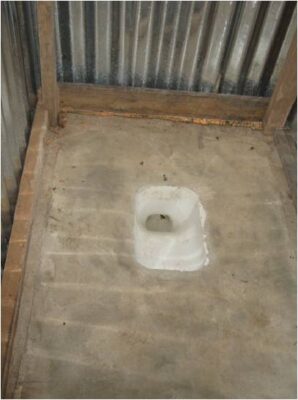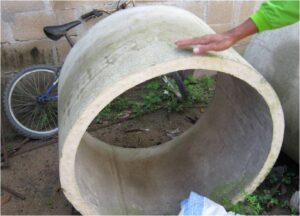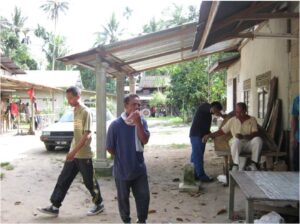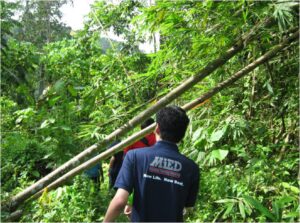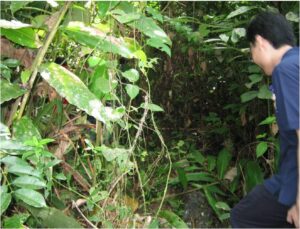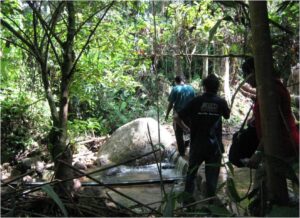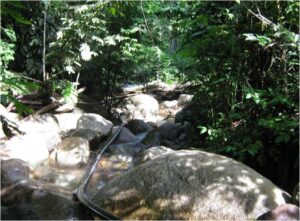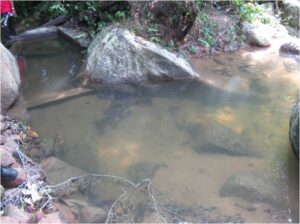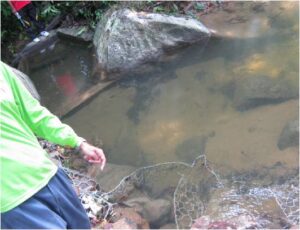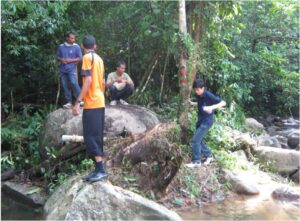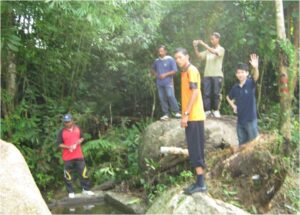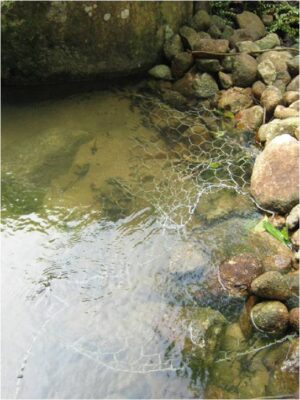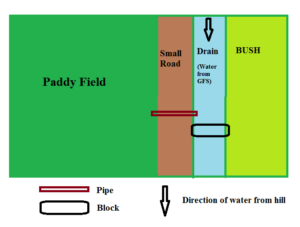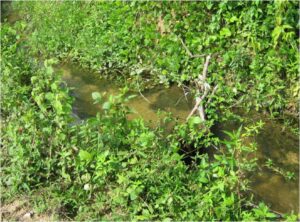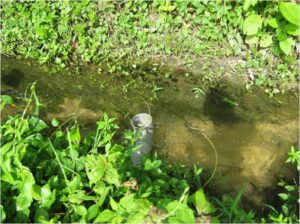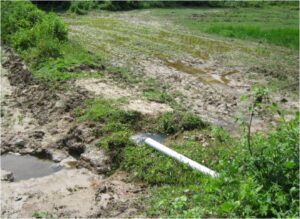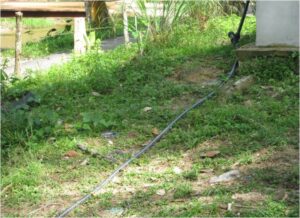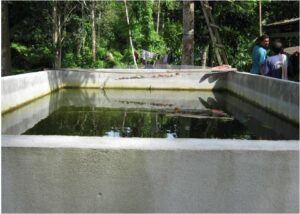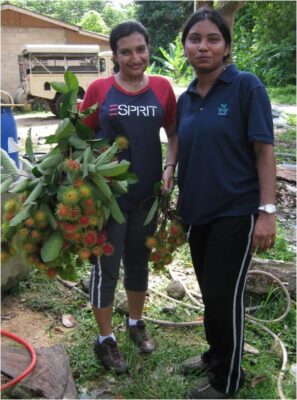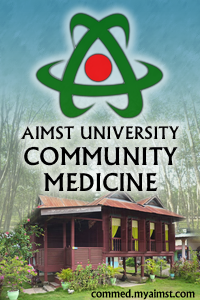Today, we have the BAKAS activity in the morning section. Mr. Hoslan, PPKP who takes in charge of the BAKAS system in Sik District gave us a short briefing on BAKAS.
MAIN OBJECTIVES
To improve the Hygiene and Health level of local citizens and to reduce the communicable disease via encouragement of environmental hygiene and health, usage of hygienic and safety water, and use the toilet which is hygienic.
INFRASTRUCTURE / ORGANIZATION OF BAKAS UNIT
BAKAS programme covers the Environmental and Water Health activities. BAKAS units in Sik District is led vt a PPKP U29 and assisted by a PKAK (Pembantu Kesihatan Awam Kanan) U22 and 3 PKA (Pembantu Kesihatan Awam) U17. Each PKA is helped by a PRA R1 (pembantu rendah am) and a Driver (pemandu) R3. PKA is responsible to implement the BAKAS programme in a sub-district respectively – 2 person in PKD Sik is responsible on Sik and Teloi sub-districts and another 2 person PKA will be placed in KK Gulau and Jeniang to in charge of BAKAS in Sok and Jeneri sub-district. PPKP BAKAS is responsible to Distric Health Officer (Dr. Ishak) through PPKP Kanan in BAKAS activities planning and implementation in each district.
Main Activities Done by BAKAS are:
- Supply water with Sanitary Latrine (tandas Curah Sempurna) or replacement of Sanitary Latrine
- Supply water with polypipe and fitting to connect with the water supply from JKR / KKM.
- Construct Sanitary Well) ( Hand Pump)
- Construct Sanitary Well) ( connect to the houses)
- Gravity Feed System
- Sistem Tadahan Air Hujan
- Sistem Perlupusan Air Limbah (SPAL)
- Sistem perlupusan Sisa Pepejal (SPSP) or Sewage & Solid Waste Disposal.
Hand Pump
After that, we were brought by Mr. Azmi, PKAK to in charge of BAKAS in Sik sub-district to Kampung Tanjung Bilik. Here, we were shown the Sanitary Latrine and hand pump.
We reach at Kampung Tanjung Bilik – Encik Yusof house, who is having Sanitary Latrine system and Sanitary Well ( Hand Pump).
Mr. Azmi told us that most of the time, the villager will use the hand pump system to get the water. The hand pump was constructed 15 years ago. It is 100 feet depth. However, occasionally, they will use the water supplied byJKR(air).
Water from the Sanitary Well ( Hand Pump). It is untreated water but safe to use to drink(if boiling).
Next, we went to visit the Sanitary Latrine sytem (toilet). Ministry of Health will supply the material to construct the Sanitary Latrine. It is 3 feets depth. The cost is about RM 900 (current price), and it is constructed by the villager because they are pro in this career. In the toilet, it does not contain any water flush, waste product will directly stored in the cylinder tank. The tank is able to store the waste product for about 10 years. After that, another tank would be built.
About 9.40am, we departed to another village which is deep into the Kampung Tanjung Bilik. Victor car followed PKA(K), our car (Pala -driver, me, Dennis and Loh) were unable to follow them because they led the road first, there is some difficulty to reverse the car in the Kampung Tanjung Bilik. Unfortunately, Pala’s car hit the tree. Thanks god! The car is still ‘safe’. Haha….
When we started to follow them, we had lost them in our eyes sight. We kept on asking people, most of them do not know where it is. Some more there is no network coverage. Thanks god again! we had met a kindly villager told us the road to meet them. Finally, we saw Mr. Azmi’s motorbike. He continued lead us to the village. Otherwise, we will start our own journey! AND having our own Gravity Feed System. haha.
Gravity Feed System
Next village is Kampung Chakor Topo. My members – Victor, Tharshinii and Fidelia were waiting us right there. Later on, on of the villager, Encik Hashim brought us to the Gravity Feed System. It is deep to the hill. Along the path, some of my member discussed with the PKA and villager. What he discussed, i am not sure about it. The journey takes about 30mins to reach the GFS (Gravity Feed System).
Wow, our Victor was talking with Mr. Azmi. Here is the path that we took.
Our Penghulu / leader: Zheng Hao.
It is not Gravity Feed System! It is just the water from the hill.
Here is the pipe that connect to the village. (Details explained subsequently)
Now, we had reached the Gravity Feed System. Unfortunately, it wasn’t the GFS what we have seen in the picture from previous batch seniors , the wall or wire fence of the dam was destroyed by the high pressure of water during heavy rain (as picture above). Before it was destroyed, according to Mr. Azmi, the wall / barrier is made by the stone surrounded by the wire fence.(like water in the pond)
Victor was taking another path that we could not get through. He managed to pass all the obstacle and reach there. Thanks god. He succeed!
According to Mr. Azmi, there are 2 pipe systems that supply the village. One is Black Pipe (as picture above: 1- Overview, 2 – magnify version). Another one is Black pipe with white line . Black pipe supplies the village for house usage. Whereas the another one is for filling the water into the artificial fish pond (described later). During raining day, the water from the hill would be very dirty or turbid. They will not use the water directly from the pipe due to turbidity during that time. Instead, each house contain a storage tank that store the clean water as a ‘standby’.Therefore, now is the time to use it. However,about 30 mins after rain has stopped, the water will regain its clarity.
After 20 minutes, we started going back. On the way, Zheng Hao and me were discussing with the villager, Encik. Hashim about the Gravity Feed System. He told us that the GFS supplies 20-25 houses in the village. Every week, one guy from each house in the village will take turn to go to the hill and ‘clean’ the pipe.
Encik. Hashim showed the Black pipe. There is one external link of the pipe. Every week, they will open the external link of the pipe along it to flow, all the sediment will flow outside the external link of the pipe.THIS IS WHAT WE SO CALLED CLEANING.At the end, there would have no sediment left inside the pipe. Of cause, they will open each of the external link of the pipe from the hill until the last station for one hour. The cleaning time is usually in the morning, from 10am to 11am.
Within this 1 hour, the pressure of the water inside the pipe will decrease. It will have no water supply to the village temporarily. During that time, villager will use the water from the storage tank.
In addition, Encik Hashim also told us that at the side of the small road, there is a draining water come from the GFS. It is the excessive water flow out from the GFS (as in thr picture A – below). Just beside the drain, there is a paddy field. They will use the draining water to supply the paddy field. In order to control each of the flow of the water into that particular paddy field, there is a block which will be controlled by the villagers to determine which station of the paddy field need to be filled with water.
For example, if they closed the block, the water will be blocked to flow down(above picture). Water will be accumulated just before the block (Below – B). Once the water is full, there is another pipe which connect between the drain and paddy field ( Below – C). The pipe will direct the water to flow into the paddy field. ( Below – D)
A. Drain, B. Block, C- Pipe from Drain, D – Pipe to Paddy field.
As for another type of pipe- Black pipe with 2 white line (below), it is used to supply the water in the artificial pond. It is built by the villager because they are hardly to get the sea food due to the geographical area(near the mountain and hill). The artificial pond feeds the freshwater fish (not sea water) that are caught in the waterfall (of the GFS). All the villager can come and catch the fish in the pond anytime as it is belonged to all of the villagers.
Before going back to DHO, Encik Hashim went and plugged lots of rambutan to us. Then, that was the end of the BAKAS trip for the morning section.
By Jun Sian
Source: mbbs12sik.blogspot.com

